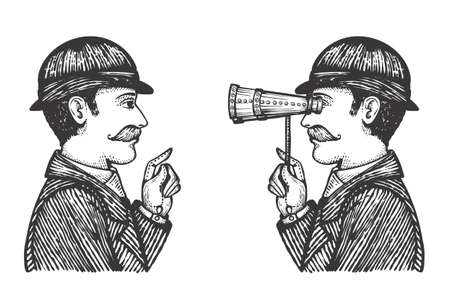1. Understanding the Cost of Distractions
The Reality of Workplace Interruptions
In today’s fast-paced American workplace, distractions are everywhere—from buzzing smartphones to constant email notifications and chat messages. While these interruptions may seem harmless, research shows they have a serious impact on productivity, employee well-being, and even career advancement.
How Much Are Distractions Really Costing Us?
| Type of Distraction | Average Time Lost per Day | Impact on Productivity |
|---|---|---|
| Email Notifications | 23 minutes* | Breaks focus; delays project completion |
| Social Media | 32 minutes* | Reduces quality of work; increases mistakes |
| Chat & Messaging Apps | 24 minutes* | Makes it hard to get back on task after interruption |
| Unscheduled Meetings | 17 minutes* | Cuts into deep work time; increases stress levels |
*Based on data from productivity studies in U.S. offices (2023)
The Ripple Effect: More Than Just Lost Minutes
A survey by Udemy found that 54% of American workers say theyre not performing as well as they could because of workplace distractions. It’s not just about the minutes lost—every interruption can make it harder to refocus, leading to lower job satisfaction and even burnout over time.
Real-World Scenario: The Interrupted Project Manager
Imagine a project manager in New York who is working on a tight deadline. Every hour, she gets pulled away by emails, Slack messages, or coworkers stopping by her desk. By the end of the day, she’s spent more time “catching up” than actually moving her projects forward. This scenario isn’t unique—it happens across American workplaces every day.
The Link Between Focus and Career Growth
If you’re constantly distracted, your performance can slip. In competitive environments like those in the U.S., this can affect promotions and raises. Employers notice who delivers consistent results—and who seems scattered or always behind.
Identifying Your Top Productivity Killers
If you want to win the battle against distractions, the first step is figuring out exactly what’s getting in your way. Some distractions are easy to spot, but others can sneak up on you and quietly chip away at your focus and productivity. Let’s break down some of the most common productivity killers in a typical American workplace.
Obvious Distractions
You probably already know about the big ones. These are the distractions that hit you right in the face every day:
| Distraction | How It Steals Your Time |
|---|---|
| Chatty Coworkers | Friendly conversations can quickly turn into long interruptions that break your flow. |
| Email Notifications | Constant pings and pop-ups tempt you to check messages instantly, pulling you away from deep work. |
| Social Media | A quick peek at Instagram or Twitter easily turns into 15 lost minutes (or more). |
| Smartphone Alerts | Texts, app notifications, and news alerts interrupt your concentration even when you’re not using your phone for work. |
Subtle Distractions You Might Miss
Not all distractions are as obvious as someone stopping by your desk for a chat. Some are much sneakier and harder to spot:
| Distraction | How It Slows You Down |
|---|---|
| Multitasking | You think you’re getting more done, but switching between tasks actually slows you down and increases mistakes. |
| Noisy Environment | Background chatter, ringing phones, or even loud air conditioning can make it tough to focus. |
| Lack of Clear Priorities | Without a clear plan for the day, it’s easy to get distracted by less important tasks or busywork. |
| Perfectionism | Spending too much time tweaking details keeps you from moving forward on bigger projects. |
How to Spot Your Biggest Productivity Killers
The best way to start identifying what’s really distracting you is to pay attention. Try tracking how you spend your time for a couple of days. Notice when your focus slips—was it because of an email notification or because you got stuck perfecting a simple task? Once you know your main productivity killers, you’ll be ready to take action and protect your time.

3. Strategies to Defend Your Focus
If you’re working in a fast-paced American workplace, distractions can pop up everywhere—Slack messages, email notifications, even friendly coworkers dropping by your desk. To win the battle against distractions and stay productive, it’s important to use practical strategies that fit both your personal style and American office culture. Here are some easy-to-apply tips:
Time-Blocking: Scheduling with Intention
Time-blocking is a popular productivity method in the U.S., used by everyone from busy executives to creative professionals. It simply means setting aside specific chunks of time on your calendar for focused work, meetings, or even breaks. By blocking out these times, you send a clear signal—to yourself and others—that you’re in “do not disturb” mode.
| Task | Time Block Example | Notes |
|---|---|---|
| Email Review | 8:30 – 9:00 AM | Check emails only during this slot |
| Deep Work (Project) | 10:00 – 12:00 PM | No meetings or calls allowed |
| Team Catch-Up | 2:00 – 2:30 PM | Collaborate or answer team questions |
| Personal Break | 3:00 – 3:15 PM | Step away for coffee or fresh air |
Productivity Apps: Tech That Helps You Stay On Track
There are tons of apps that Americans rely on to keep their attention sharp. Tools like Trello, Asana, and Todoist help organize tasks and deadlines. If you find yourself getting sidetracked by social media, try browser extensions like StayFocusd or Freedom, which block distracting websites during work hours. Even simple timers like the Pomodoro Technique (25 minutes of work, 5 minutes of break) can make a big difference.
Popular Productivity Apps in the U.S.
| App Name | Main Use | Cultural Fit/Tone |
|---|---|---|
| Trello/Asana | Task & Project Management | Great for teamwork and transparency—valued in most American offices. |
| Slack/Microsoft Teams | Team Communication & Collaboration | Easily set status as “Do Not Disturb” to protect focus time. |
| Freedom/StayFocusd | Website Blocking & Focus Aid | Widely used to limit social media and news site distractions. |
| PomoDone/AppBlocker Timer Apps | Pacing Work & Breaks (Pomodoro Method) | Makes it easy to work in sprints—a style many Americans prefer. |
Setting Boundaries with Colleagues: Communicate Clearly & Respectfully
A big part of defending your focus is learning how to politely say “not now.” In American workplaces, it’s totally acceptable (and often respected) to set boundaries. Try phrases like:
- “I’m heads-down on a project right now. Can we chat at 2 PM?”
- “I’ve blocked out this hour for deep work—I’ll circle back after.”
- “Can you send me an email instead? I’ll respond when I’m free.”
- “I’m using ‘Do Not Disturb’ so I can meet my deadline—thanks for understanding!”
Tips for Setting Boundaries at Work:
- Add time blocks to your shared calendar so teammates know when you’re unavailable.
- Use status updates on Slack or Teams to indicate focused work periods.
- If you work remotely, let family or roommates know about your focus times too.
- If someone interrupts, kindly remind them you’ll get back to them soon.
- Praise colleagues who respect your boundaries—it encourages good habits all around!
The key is consistency and clarity. When you combine time-blocking, smart tech tools, and respectful communication, you build a strong shield around your productivity—even in the busiest American workplaces.
4. Building Habits for Sustainable Productivity
Behavioral Hacks Popular in U.S. Workplaces
Staying productive at work isn’t just about willpower—it’s about building the right habits. In the U.S., many professionals rely on proven behavioral hacks to help them win the battle against distractions and protect their time. Let’s explore a few that can make a big difference in your daily routine.
The Pomodoro Technique
This classic method is simple but powerful. Set a timer for 25 minutes, focus on one task, then take a 5-minute break. After four cycles, enjoy a longer break (15-30 minutes). This helps you maintain energy and attention throughout the day. Many American offices encourage this approach because it keeps tasks manageable and prevents burnout.
| Step | What To Do | How It Helps |
|---|---|---|
| 1 | Work for 25 minutes (Pomodoro) | Boosts focus by creating urgency |
| 2 | Take a 5-minute break | Allows your mind to recharge |
| 3 | Repeat 4 times, then take a longer break | Keeps productivity high without fatigue |
Mindful Breaks: Quality Over Quantity
In American workplaces, short mindful breaks are gaining popularity. Instead of scrolling through social media during breaks, try deep breathing, stretching, or stepping outside for fresh air. These intentional pauses help reset your brain and reduce stress—so you return to work with renewed focus.
Ideas for Mindful Breaks:
- Breathe deeply for two minutes at your desk
- Take a quick walk around the office or block
- Stretch your arms and legs gently
- Sip water slowly and focus on the taste and temperature
Time Blocking: Defend Your Calendar
Many American professionals swear by “time blocking.” This means reserving chunks of your calendar for specific tasks—and protecting those blocks from meetings or interruptions. Treat these time blocks like important appointments, and let coworkers know when you’re not available except for emergencies.
| Time Block Example | Description |
|---|---|
| 8:30 – 10:00 AM | Email catch-up (no meetings) |
| 10:00 – 12:00 PM | Main project work (deep focus) |
| 1:00 – 1:30 PM | Coffee break & mindful walk |
| 1:30 – 3:00 PM | Team collaboration (meetings allowed) |
| 3:00 – 4:30 PM | Finishing tasks & planning tomorrow |
Your Daily Routine Matters Most
The real key to sustainable productivity is consistency. Whether you use the Pomodoro Technique, mindful breaks, or time blocking, stick with your habits every day. Small changes add up—helping you stay focused, energized, and ready to tackle distractions head-on.
5. Communicating Boundaries and Gaining Support
Why Setting Boundaries Matters
In today’s workplace, staying focused can feel like an uphill battle. From chat messages to last-minute meetings, distractions are everywhere. One of the most effective ways to protect your time is by clearly communicating your boundaries to your teammates and managers. When you let others know when you need uninterrupted work time, you help set expectations and make it easier for everyone to respect each other’s productivity.
How to Assert Your Need for Focus
It can be uncomfortable at first, but being honest about your needs helps build trust and understanding. Here are some easy ways to assert your need for focus:
| Situation | What You Can Say |
|---|---|
| When someone wants to chat during your focus time | “I’m working on a deadline right now—can we catch up after 2 PM?” |
| If you’re invited to a non-urgent meeting | “I’m heads-down on a project this morning. Could you send me notes or loop me in later?” |
| When team notifications get overwhelming | “I’m turning off notifications for the next hour so I can concentrate. If anything urgent comes up, please text me.” |
The Power of Open Dialogue
Creating a culture where productivity is respected starts with open conversations. Encourage your team to share how they prefer to work best—maybe some people like quiet mornings while others are night owls. By talking openly, everyone can find common ground and support each other’s needs.
Tips for Fostering Open Communication:
- Host regular check-ins: Use team meetings to discuss what’s helping or hurting productivity.
- Share wins and challenges: Celebrate when someone successfully protects their focus time, and brainstorm solutions together when distractions creep in.
- Create shared norms: Agree as a group on “quiet hours” or no-meeting blocks.
Building a Respectful Work Culture
When everyone values productivity, it becomes easier to support one another. Make it normal to ask for focus time, and encourage teammates to do the same. Over time, these small changes add up—helping everyone win the battle against distractions together.


